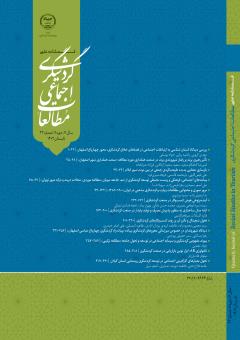ارائه مدل ساختاری به منظور پذیرش مصرف و تولید پایدار در صنعت گردشگری
محورهای موضوعی : مطالعات اجتماعی و گردشگری، جامعه شناسی گردشگری
1 - دانشگاه یزد
کلید واژه: مصرف و تولید پایدار (SCP), زنجیره تأمین پایدار, صنعت گردشگری, دیمتل خاکستری,
چکیده مقاله :
توجه به الگوهای مصرف و تولید پایدار (SCP) در اجرای پایداری در همه فعالیت های اقتصادی بسیار مهم و ضروری هستند. از این نظر، این مطالعه به طور منحصر بهفردی بر توسعه یک مدل ساختاری برای ارزیابی محرکهای پذیرش مصرف و تولید پایدار و بهبود جنبههای پایداری در خصوص زنجیره تأمین در حوزه گردشگری متمرکز است. در ابتدا، چهارده عامل مرتبط با مصرف و تولید پایدار از ادبیات و مطابق با نظر کارشناسان انتخاب و تدوین شدند. سپس از تکنیک تصمیم گیری خاکستری استفاده شد. این رویکرد نه تنها به روابط علی بین محرک های انتخاب شده شناسایی کرده، بلکه به ارزیابی قدرت روابط متقابل آنها نیز کمک می کند. یافتهها حاکی از آن است که ده پیشران، تأثیرگذار و چهار پیشران، تأثیرپذیر بوده اند. «سیاستها و مقررات دولتی برای توسعه نظام متمرکز بر مصرف و تولید پایدار»، «حمایت و مشارکت مدیریت در اجرای مصرف و تولید پایدار»، «ابتکارات و طرحهای تبلیغاتی که توسط بنگاههای مختلف گردشگری در اجرای مصرف و تولید پایدار تنظیم میشوند» و «کسب مزیت بازار و بهبود عملکرد کلی در صنعت» به عنوان تأثیرگذارترین محرکها شناخته شده و به راحتی بر سایر پیشران ها تأثیر میگذارند. یافته های این مقاله با شناخت گروه علت ها (تأثیرگذار) و گروه معلول ها (تأثیرگذار) در مصرف پایدار و اجرای تولید در زنجیره تأمین گردشگری، به مدیران کمک می کند. مدیران با شناخت محرکهای علت و معلولی، میتوانند به راحتی مسائل مربوط به تولید و مصرف پایدار در سطح فعالیت خود تحلیل کرده و در نتیجه بهتر میتوانند عملکرد کلی را بهبود بخشند.
Sustainable consumption and production patterns (SCP) play a crucially important role in the sustainable implementation of all economic activities. Therefore, this study specifically sought to develop a structural model to assess the driving forces involved in establishing a sustainable consumption and production pattern and to improve the sustainable aspects of the supply chain in tourism. To this end, first, fourteen consumption and production-related factors were selected and developed using the relevant literature and the experts’ views. Then, the collected data were analyzed using the Gray Relational Analysis, considering the fact that this model helps identify the causal relationships between the selected stimuli and assess the power of their mutual interactions. According to the study’s findings, ten influencing driving forces and four influenced ones were identified as the factors involved in establishing a sustainable consumption and production pattern in the tourism industry. Accordingly, the highly influential driving forces that readily affect other driving forces were identified as the "Government policies and regulations for developing an integrated system of sustainable consumption and production", "The managerial Support and involvement in implementing a sustainable consumption and production pattern", "Initiatives and advertising campaigns developed by various tourism enterprises for implementing a sustainable consumption and production pattern", and “Gaining market advantage and improving the overall performance in the industry". Identifying the causes and effects involved in implementing a sustainable consumption and production pattern in tourism’s supply chain, the findings of this study can help managers easily analyze relevant issues in this regard and thus enhance their overall performance by recognizing the cause and effect driving forces.
